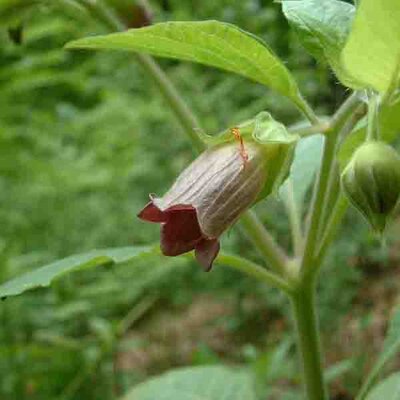
Atropa belladonna ssp. caucasica
Atropa belladonna is a subspecies of Belladonna native to the Caucasus. It can grow to almost 2 meters in height, with purple flowers followed by black berries. This botanical species, a member of the Solanaceae family, has a long history of medicinal, pharmaceutical, ritual, entheogenic and magical uses. All parts of the plant can be highly toxic when misused, containing powerful substances such as hyoscyamine, atropine, scopolamine and others.
in bucket
Perennial seeds require a wintering period for germination. Place them in the fridge for 60 days before sowing in spring. Sow in trays, on the surface, then press lightly. When the plants have 5 or 6 leaves, transplant into individual pots or directly into warmed soil. Autumn sowing is done in the same way and left outdoors until spring.
February, March, April, September, October, November
June, July, August
in the ground, in pot
semi-shade
medium
humus
fees
Atropa belladonna ssp. caucasica
mid-season
50 seeds
Violet
From 100 to 200 cm
Belladonna was one of the most highly regarded traditional medicinal species among Europe's ancient apothecaries and pharmacists. Hildegarde de Bingen, for example, recommended it as an ointment for toothache. In Traditional Chinese Medicine, this medicinal species, known as Dian Qie, is used to soothe pain and spasms, and to relieve duodenal and gastric ulcers, nausea, vomiting, cholecystalsia, fevers, epilepsy and more. This species is also used by the pharmaceutical industry for the treatment of conjunctivitis, asthma, urinary tract infections, biliary imbalances, etc. The Atropa genus contains numerous components, flavonoids, alkaloids, terpenes, etc. Biological and pharmacological studies have shown that Atropa can be used to treat a wide range of conditions. Published biological and pharmacological studies have highlighted a broad spectrum of medicinal capacities for species of the Atropa genus - named after one of the Moires in Greek Mythology, Atropos, the Implacable - namely, anti-cancer, anti-tumor, anti-oxidant, antibacterial, antimicrobial, antiviral, etc. Belladonna species have also been much studied recently for their ability to treat neurodegenerative pathologies such as Parkinson's disease. Two medicinal plants in the Solanaceae family are being particularly studied for their neuronal regeneration capacities: Atropa belladonna and Hyoscyamus niger, as well as the following species: Belladonna can also act as an anti-poison in cases of morphine, pilocarpine and muscarine intoxication.






